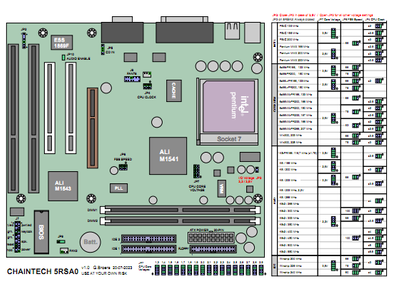Reply 40 of 44, by elmeyer
ragefury32 wrote on 2020-07-17, 03:46:elmeyer wrote on 2020-01-05, 10:01:I think the Aquarius 5BLSP-A
has them all beatis up there. It is to my knowledge only found in the Igel WinNET IV thin client. SiS 530 "Super Socket 7" chipset with onboard graphics via AGP (great DOS compatibility), built-in ESS Solo-1 (also great DOS compatibility for a PCI chip) and Realtek RTL8139B 10/100 LAN. Supports K6-2+ and K6-3+ OOB, which mitigates the low 64 MB cacheable RAM due to only 512 KB of motherboard cache. It also has a DOC socket and 44-pin IDE, great for adding a CF card. Note also the PCI/ISA riser — stick a Voodoo in there, and you’ve got yourself a powerful tiny time machine that handles even speed-sensitive DOS games (FSB even goes down to 50 MHz) up to late-90s Windows games. Picture attached.50CE69D5-1C82-42C7-AAF7-B634E03BE674.jpeg
EDIT: whoops, didn’t see kool_kitty89‘s post. Anyway, this board still packs a lot of punch for its size.
Say, is this machine yours? What CPU is it running and how was the CPU voltage set?
I have the 5BLSP-A (Igel Etherminal J+) and a copy of the manual, but I can't seem to make heads or tails with the voltage setting. The voltage quoted for the setting (lowest 3 pins closed) does not seem to match the one used on the default (K6-2E @ 333MHz , AMZ model, 1.9VCore/3.3VIO)...
Mine came overvolted to 2.1V, IIRC. But check the voltage reported in the BIOS to see what’s really going on.
